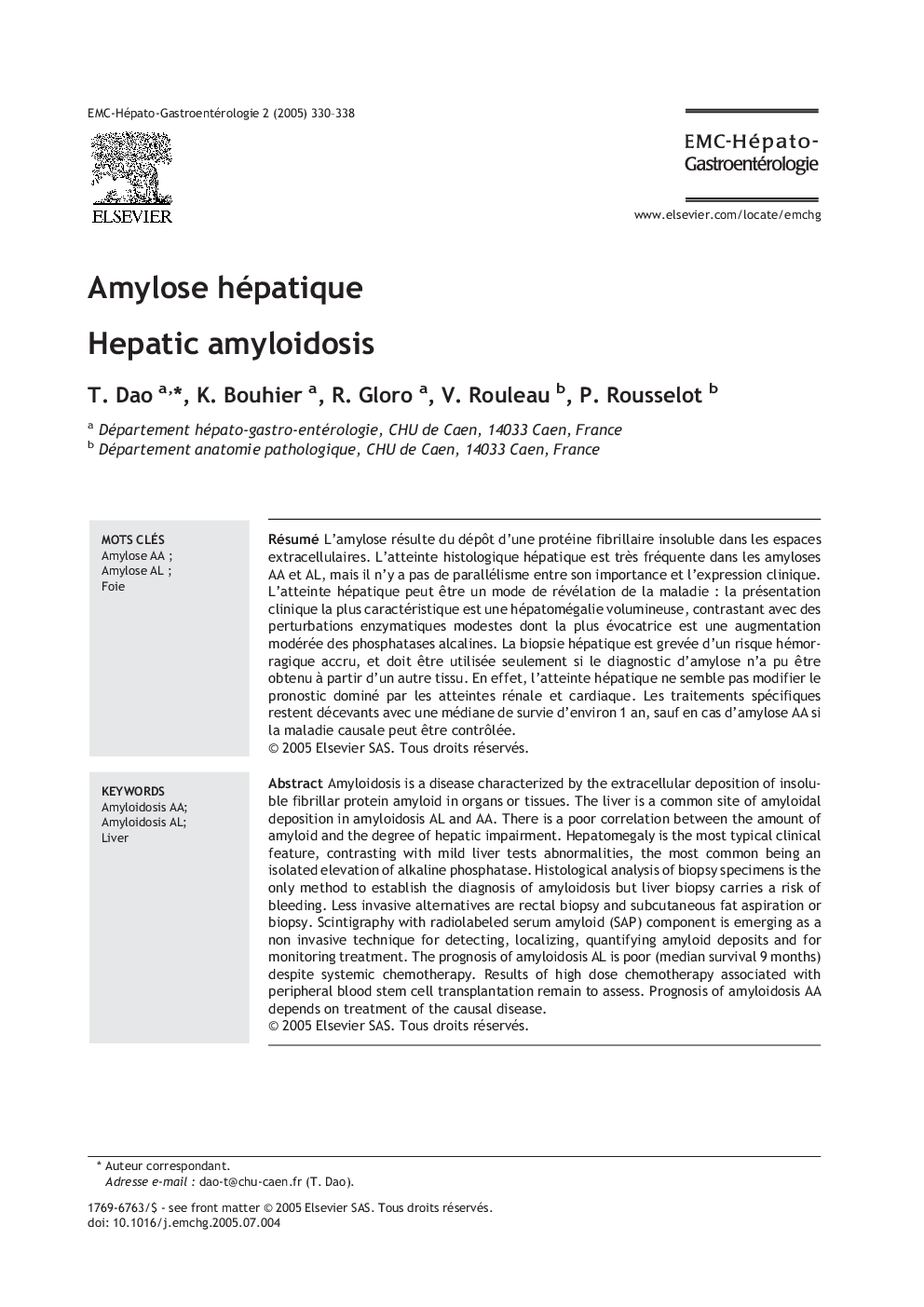| Article ID | Journal | Published Year | Pages | File Type |
|---|---|---|---|---|
| 9242336 | EMC - Hépato-Gastroenterologie | 2005 | 9 Pages |
Abstract
Amyloidosis is a disease characterized by the extracellular deposition of insoluble fibrillar protein amyloid in organs or tissues. The liver is a common site of amyloidal deposition in amyloidosis AL and AA. There is a poor correlation between the amount of amyloid and the degree of hepatic impairment. Hepatomegaly is the most typical clinical feature, contrasting with mild liver tests abnormalities, the most common being an isolated elevation of alkaline phosphatase. Histological analysis of biopsy specimens is the only method to establish the diagnosis of amyloidosis but liver biopsy carries a risk of bleeding. Less invasive alternatives are rectal biopsy and subcutaneous fat aspiration or biopsy. Scintigraphy with radiolabeled serum amyloid (SAP) component is emerging as a non invasive technique for detecting, localizing, quantifying amyloid deposits and for monitoring treatment. The prognosis of amyloidosis AL is poor (median survival 9 months) despite systemic chemotherapy. Results of high dose chemotherapy associated with peripheral blood stem cell transplantation remain to assess. Prognosis of amyloidosis AA depends on treatment of the causal disease.
Keywords
Related Topics
Health Sciences
Medicine and Dentistry
Gastroenterology
Authors
T. Dao, K. Bouhier, R. Gloro, V. Rouleau, P. Rousselot,
